Located at the intersection between intimacy and otherness, the exhibition Soft Screens, at Anca Poterașu Gallery, brings together four perspectives that, despite originating from different selves and stories, meet in the common point of self-knowledge. “Is it not important if it is about myself? Can I not explain? Would be too subjective?” These are a few questions in a whole stream of consciousness that took shape in the gallery’s basement, questions which, without waiting for or anticipating an answer, have already been integrated and sublimated in the works of the four artists: Alexandra Șerban, Andreea Stroe, Lena Ciobanu, and Petra Maria.
Wherever I travel I find and leave traces
The exhibited works are part of a history of personal mythologies, with the meaning established by Isabelle de Maison Rouge (Mythologies personnelles : l’art contemporain et l’intime, 2004, Paris). The films scanned by Petra in her personal space, the text read by Andreea in the soundtrack of the film Only God sees 3D, Alexandra’s self-portraits, and Lena’s everyday objects, even the couch or small embroideries hidden in plain sight, everything that contributes to the immersiveness of the exhibition space is traversed by duration, by the subjective time of personal histories that are prefigured for the viewer but never completely revealed. Because of their use of non-fictional narratives, with autobiographical or autoethnographic tendencies, the elements put together as a two-room installation are part of the genealogy of mainly photographic art of the ’70s, where the artist’s personal identity was reintegrated into the art-making process. At the time, the fascination for the artist’s individual history came as a reaction to minimalism and structuralism, which wanted to remove any psychological or emotional load from the authors’ works, and the disappearance of subjectivity from art was already proclaimed by Roland Barthes in La mort de l’auteur. The ’70s rehabilitated interiority, which had been forgotten and repressed, making the creative subject the center of their creation, surrounded by representations of the self or their everyday experiences.
We see this same drive towards the possibility of exploring identity through art in the exhibition Soft Screens. The main difference consists in the situations that anticipated the interest in autobiographical art: unlike the conceptual framework of last century, the installation in question is not a reaction to an ignored subject, but, on the contrary, to a hyperinflated one in the context of the pandemic. Spending months on end with ourselves, often without any other human presence, we found ourselves in the ideal context for self-reflection, which has deeply fueled the four artists’ works.
I can’t express how much I see myself in you
Another aspect that distinguishes the exhibition is the ease with which one can identify with, see, or transpose themselves in the materials displayed. We are not faced with an archival inventory in the style of Christian Boltanski (Vitrine, 1971; Les Modèles, 1972; Inventaire, 1973), the contemplation of which leaves the viewer with a carefully structured picture or with information about the author and their art that could serve a concrete purpose in a biographical research. When we are faced with actual archives or photographs catalogued according to objective criteria, we see those images as an opaque surface, not as a mirror. It is precisely this opacity that is modified and reduced in Soft Screens, where the works either tacitly (the photos in the series cândva oricând, cândva curând [sometime anytime, sometime soon] by Alexandra Șerban) or actively (the analysis of our own perception to which Andreea Stroe invites us in her project Only God sees 3D) encourage the viewer’s participation in the artists’ exercise of self-knowledge. The visitor’s access to the universe unraveled by the works is facilitated by the interweaving of the various perspectives: we do not see them as fragmented and contrasting representations of distinct individualities; instead, we perceive the exhibition’s coherence from the very beginning. We are even allowed behind the scenes of this coherence, in a virtual intimate space created by Lena Ciobanu’s film douăzeci și patru de ore împreună (eu și tu, mai intim decât noi) [twenty-four hours together (me and you, more intimate than us]. One of Lena’s intentions was in fact to line up the time of the group getting used to each other with that of the viewer familiarizing themselves with the film.
If the artists succeed in finding congruent means of expression and meanings only after all the time they spent together, integrating the viewer into the exhibition cannot have the same generative effect. Blurring the boundaries between the artists’ individuality and that of the viewers is determined by the paradoxical universality of the intimate experiences that the works are based on. Imagination, perception, self-analysis, and the observation of the mechanisms of consciousness are processes that we all share, despite their differences in content, because they belong to human interiority in general. Despite incorporating self-portraits and a series of images of personal items, Alexandra Șerban’s photographs show a high degree of abstraction and anonymization that tears them from their origin and offers them an intriguing universality, even a certain sacredness in the case of the items. Besides the exteriorization necessary for any contemplation, the viewer is encouraged to attempt the reverse, to turn the gaze inward. From this exercise, a series of questions arises: what do I see when I look at the other? What does what I see in the other say about me? Before we can reach a concrete answer, we must first set aside the feeling of otherness, which is removed in favor of a deeper immersion in the space the artists have created. We no longer see things to distance themselves, to differentiate ourselves from them, as we would be encouraged to do by the codes of a society based on competition, but in order to enter the images shown to us.
From the sky came a swan song
One direct invitation to a reflection that mirrors the artist’s is offered by Andrea Stroe, whose work Only God sees 3D is accompanied by a series of instructions: the viewer is recommended to first read a text and only then watch the movie. We can then actively observe the distinction between imagination and perception (“Ask yourself if you perceived step 1 differently from step 2”). At the same time there is a conflict between our imaginative tendencies and the other’s way of thinking, represented by the image that has already been thought, seen, and filmed. Just as Andreea asks herself in a few typewritten pages, we can also consider “How abstractly do I allow myself to think? (…) Can everything be interpreted? Is there no limit?”
As any good exercise in self-knowledge, the exhibition Soft Screens also offers us a journey into the mechanisms of the subconscious, sustained and amplified by the basement’s half-light – they say that the basement is a house’s subconscious. A visual basis for the analysis of unconscious psychic phenomena is Petra Maria’s installation, a montage of scanned images organized in collages (not photographed by the artist), suspending the films over the projection. The anticipated effect (producing a state similar to hypnosis) is consistent with the use of pre-existing films, as creating a film from scratch would have necessarily involved a series of conscious processes. Given the way Petra’s work is made, we have a series of images lacking a pregiven coherence, which would have gone contrary to her intention of facilitating a Jungian analysis of the self. The concept of shadow work is also found in a series of photos from the artists’ personal archive, exhibited in the dark and accompanied by a flashlight which the visitor can use to illuminate parts of the wall, putting into practice the conscious process through which we are only able to clarify one dimension, one region in the Husserlian sense at a time.
This exercise is continued in the four artists’ Manifesto: a film traversed by a dream-like atmosphere, projected on a cloth before which various objects hang. Playing with various textures, contrasts between transparency and opacity, degrees of fluidity, and the notion of floating, the projection integrates fragments from each artist’s personality, transfiguring personal identity into artistic identity. The use of fabric as a filmic background is also the origin of the title Soft Screens. Through the chosen projection technique, the rigidity of the brick walls and classic TV screens is tempered, and the image is allowed to transcend the limits often imposed onto it. Unlike other media, canvas can most directly convey the sensitivity imbuing the works, helping shape an authentic space of intimacy, vulnerability, and fragility, qualities traditionally associated with female weakness but which in the context of the exhibition become an expressive, visible strength.
The exhibition Soft Screens shows us that identity is formed at the intersection between self-awareness and other people’s view of us. We do not only exist in the first person, and through art we are offered an encounter with ourselves in the third person, both from the creator’s perspective and from the viewer’s perspective. In contemplating the works on display, we are encouraged to engage in a double movement of the gaze, so as to tackle both the artwork before us and the psychological processes within us. The works of Alexandra, Andreea, Lena, and Petra are constituted in a double effort, of establishment (of perception, imagination, and personal mythologies) and of resistance, to oblivion, which could otherwise hinder the method of autobiographical and autoethnographic research. Their personal and artistic identities prevail in the fight against their own ephemerality, being preserved in time capsules or Deleuzian time crystals. The process of documenting the self becomes, in the artists’ words, a game of materiality, meaning, and connections.
Translated by Rareș Grozea
POSTED BY
Monica Seiceanu
Monica Seiceanu is studying philosophy at the University of Paris 1 Panthéon-Sorbonne. Her interests include phenomenology, aesthetics and contemporary art....
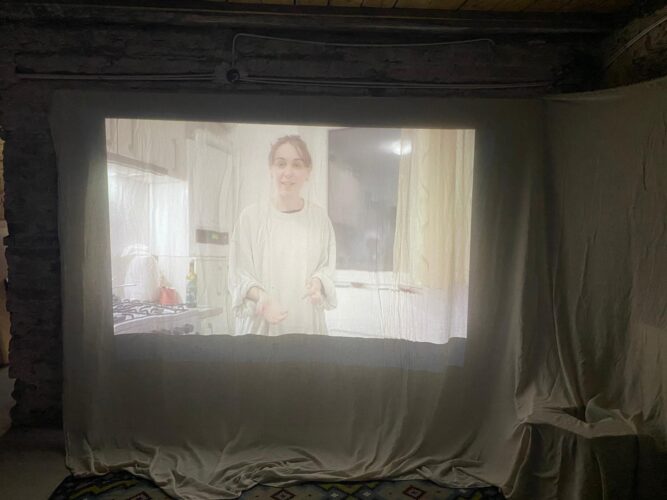
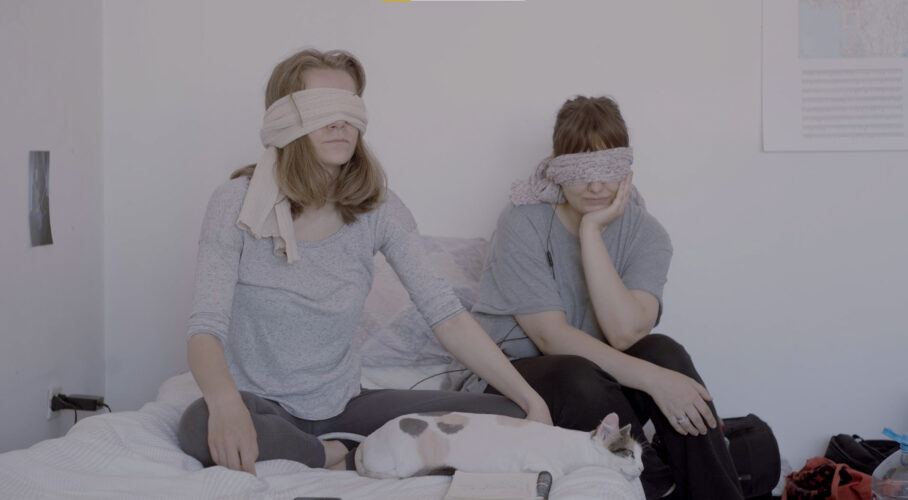
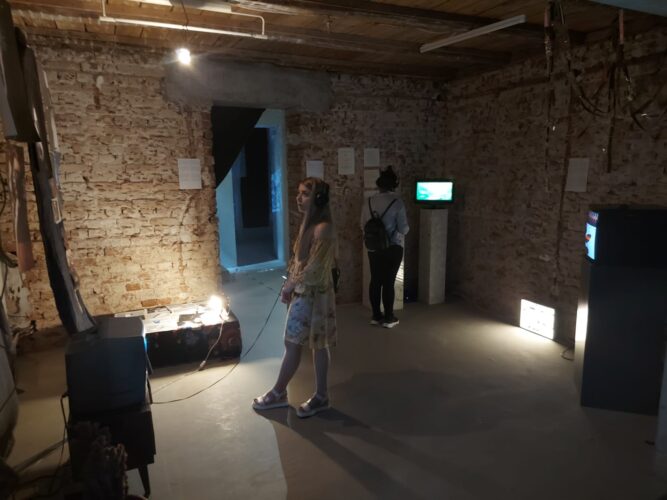
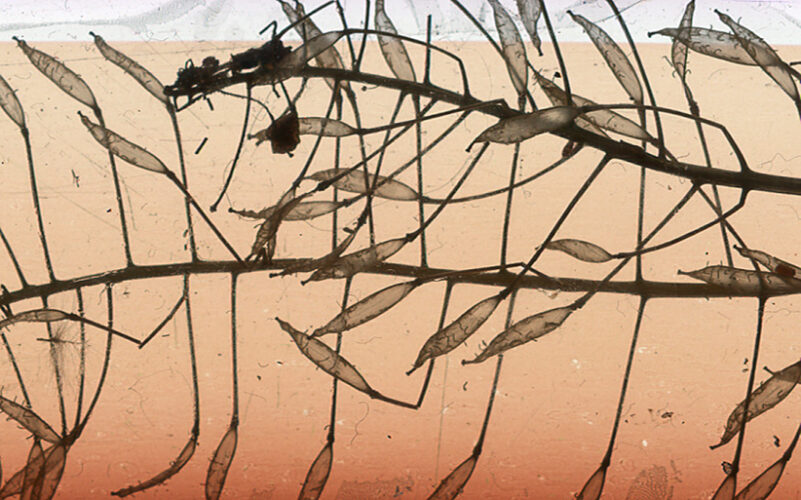

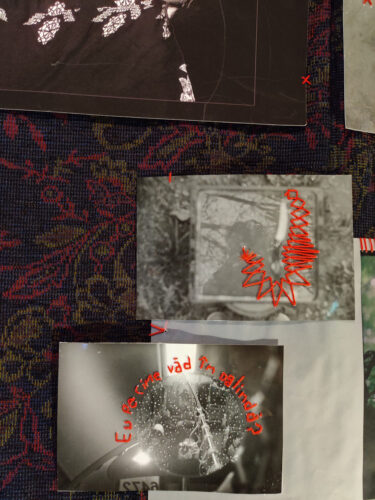
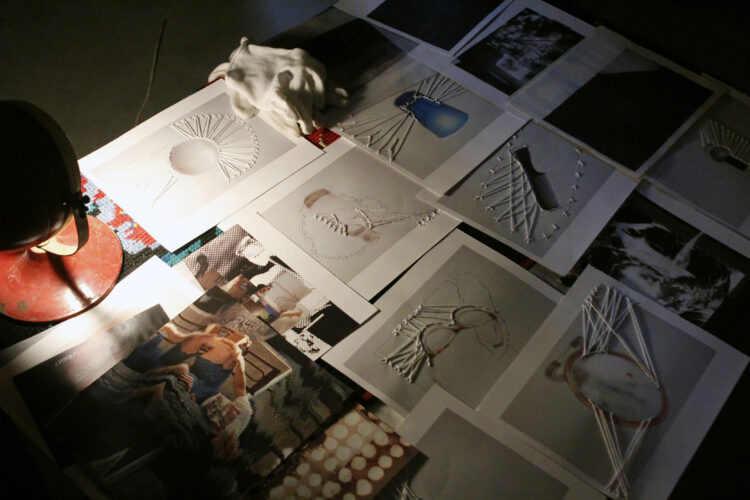
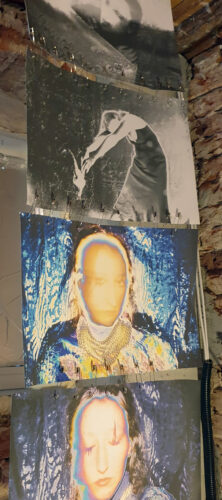
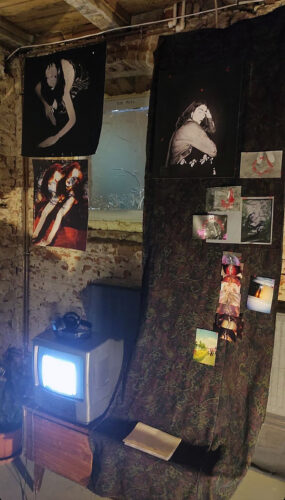
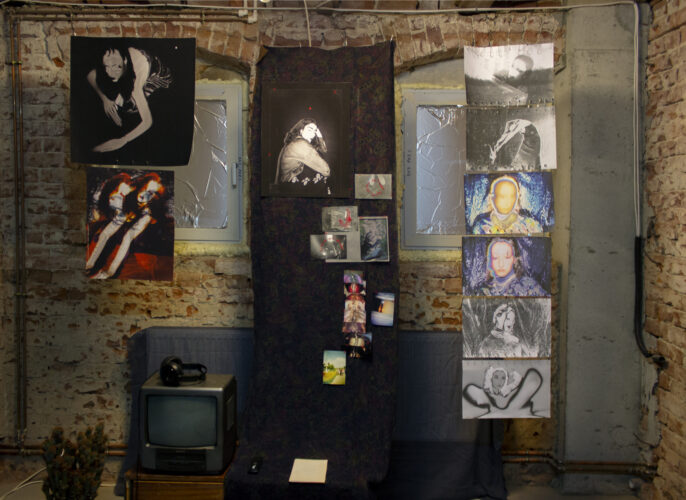
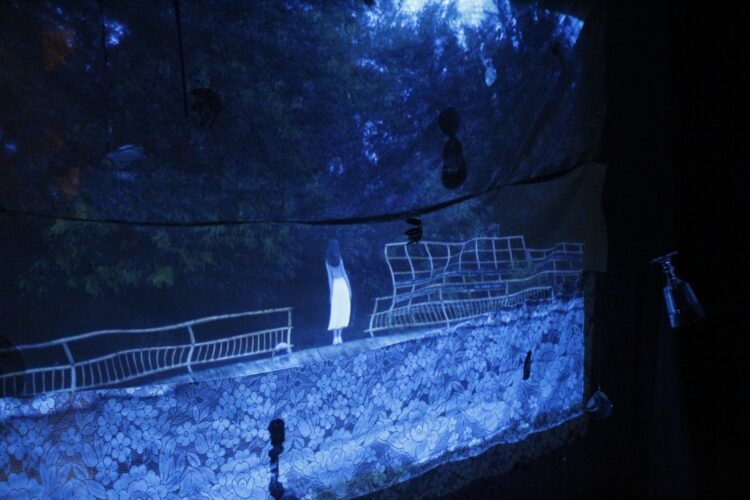
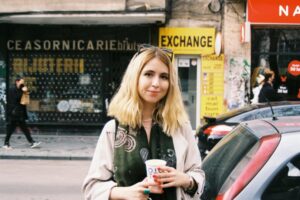
Comments are closed here.